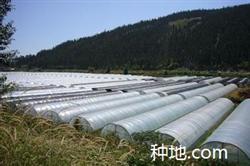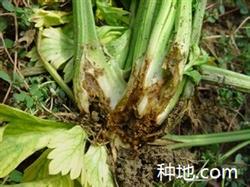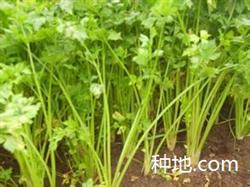How to deal with the disaster weather when growing celery in the greenhouse?

How to deal with the disaster weather when growing celery in the greenhouse? When celery is cultivated in greenhouse in winter and early spring, it often encounters disastrous weather such as continuous cloudy days, strong winds, snow, rainfall and so on, resulting in insufficient light in the greenhouse, lower temperature, increased humidity and aggravated diseases, which seriously affect the photosynthesis of celery and affect its yield and quality. Therefore, we need to pay attention to the management, prevent in advance and reduce the loss. Celery likes cold climate, and the suitable temperature for growth is 15-20 ℃. The growth of plants higher than 28 ℃ is inhibited, resulting in thickening of petiole, well-developed cuticular tissue and vascular bundles, and hollow petiole in serious cases, which seriously affects the quality. Therefore, in the case of not affecting the normal growth of celery on the temperature requirements, during the day as far as possible to open the grass, so that celery more light. Avoid leaving quilts or grass uncovered for several consecutive days. In case of windy days, pay attention to windproof, stop ventilation, seal the vents, compact the quilt or grass quilt, prevent it from being blown away by the wind, and avoid frostbite of celery plants. After the strong wind, tidy up the shed surface in time, take careful care of the injured plants, spray carbendazim or chlorothalonil and other drugs in time to prevent the occurrence of celery spot blight and leaf spot, and cooperate with Meibang "Tongzhu vein" humic acid foliar fertilizer to increase plant nutrition, improve plant resistance and accelerate plant growth and development. When necessary, apply "Root Duobao" humic acid fertilizer with water to promote roots and strong trees. When you encounter a blizzard in winter and the temperature is low, you should prevent frostbite at night and pay attention to covering and keeping warm. When it suddenly clears up after the snow, it is necessary to avoid strong light exposure to the celery plant soil, especially when the celery plant has been slightly frozen and some plants have fallen to the ground, we should pay attention to the fact that we can properly put down some quilts or grass quilts and gently open the tuyere. let the temperature in the shed rise slowly, and then resume normal management after the inverted plants stand upright. Under normal circumstances, foliar spraying 2% brown sugar + 800 times humic acid foliar fertilizer can accelerate plant growth. Watering and fertilization should be strictly stopped in continuous cloudy and snowy days, especially chemical fertilizers such as urea, so as not to quickly reduce the ground temperature and increase the humidity in the shed. At this time, you can choose dust or aerosol, or smoke in the shed to reduce fog. When there is a large amount of snow, it is necessary to remove the snow in time so as not to crush the shed. More celery planting techniques
- Prev

How to do celery sclerotinia disease?
What if Sclerotinia disease harms celery? Sclerotinia sclerotiorum of celery can harm leaves, petioles and stems. In general, the leaves are the first to suffer from the disease, showing dark stains and a dense white mildew layer on the surface when it is wet. Then spread downward to cause petiole and stem disease. The injured part is brown water stain, when the speed is high, it forms soft rot, and the surface grows white.
- Next

How to water and fertilize celery in greenhouse?
How should celery be watered and fertilized in greenhouse? Nitrogen deficiency in celery not only hinders the growth of the plant, the leaves are small, but also the petiole is prone to hollow. Phosphorus deficiency in the early stage and potassium deficiency in the later stage had great effects on the yield and quality of celery. Celery is very sensitive to boron fertilizer, and stem cracking occurs when boron deficiency occurs. Celery should be used in greenhouse.
Related
- Where is it suitable to grow horseradish in China? it is expected to see the middle altitude horseradish in Alishan.
- How to prevent tomato virus disease reasonably? (Control methods included)
- Many people like to plant towel gourd on the balcony. What are the main points of this method and management?
- What crops can chili peppers be mixed with?
- Fertilization techniques and matters needing attention in Tomato
- What are the grafting techniques for peach seedlings in spring?
- Harm and control methods of root swelling disease of Chinese cabbage
- What are the pests of sweet potatoes? How to prevent and cure it?
- Symptoms, causes and Control methods of navel Rot in Tomato
- The cause of "Cucumber rotten bibcock" in Farmers' planting Cucumber and its Control Plan

